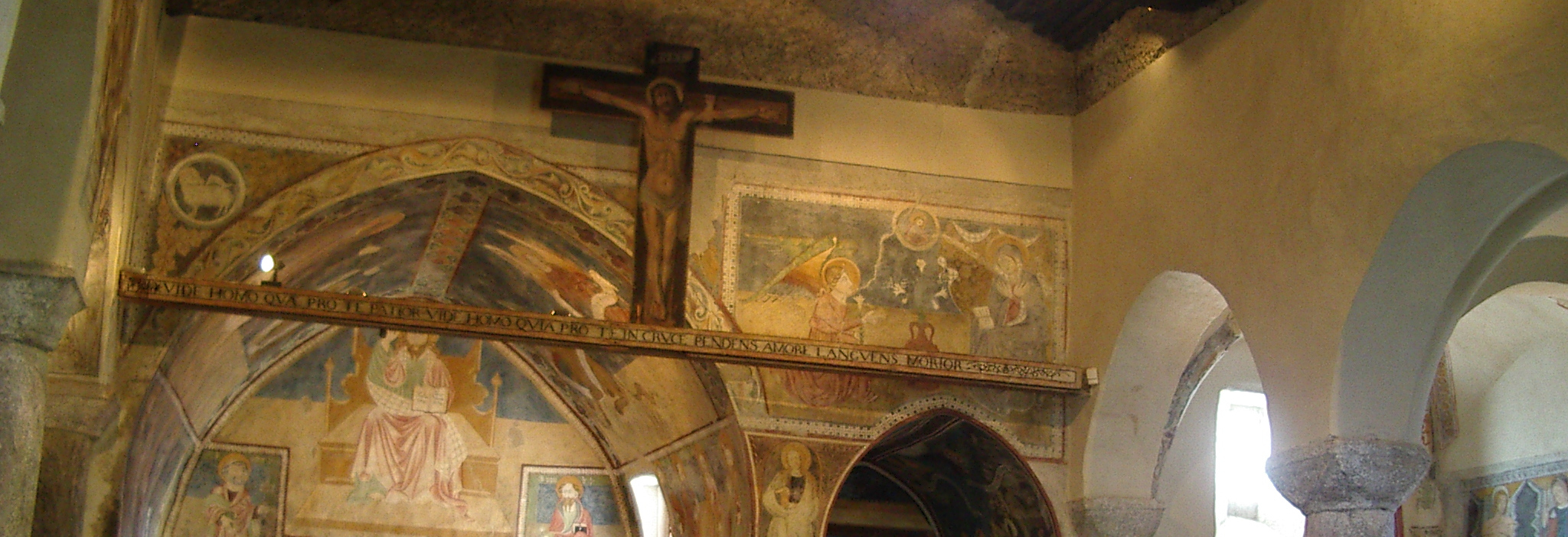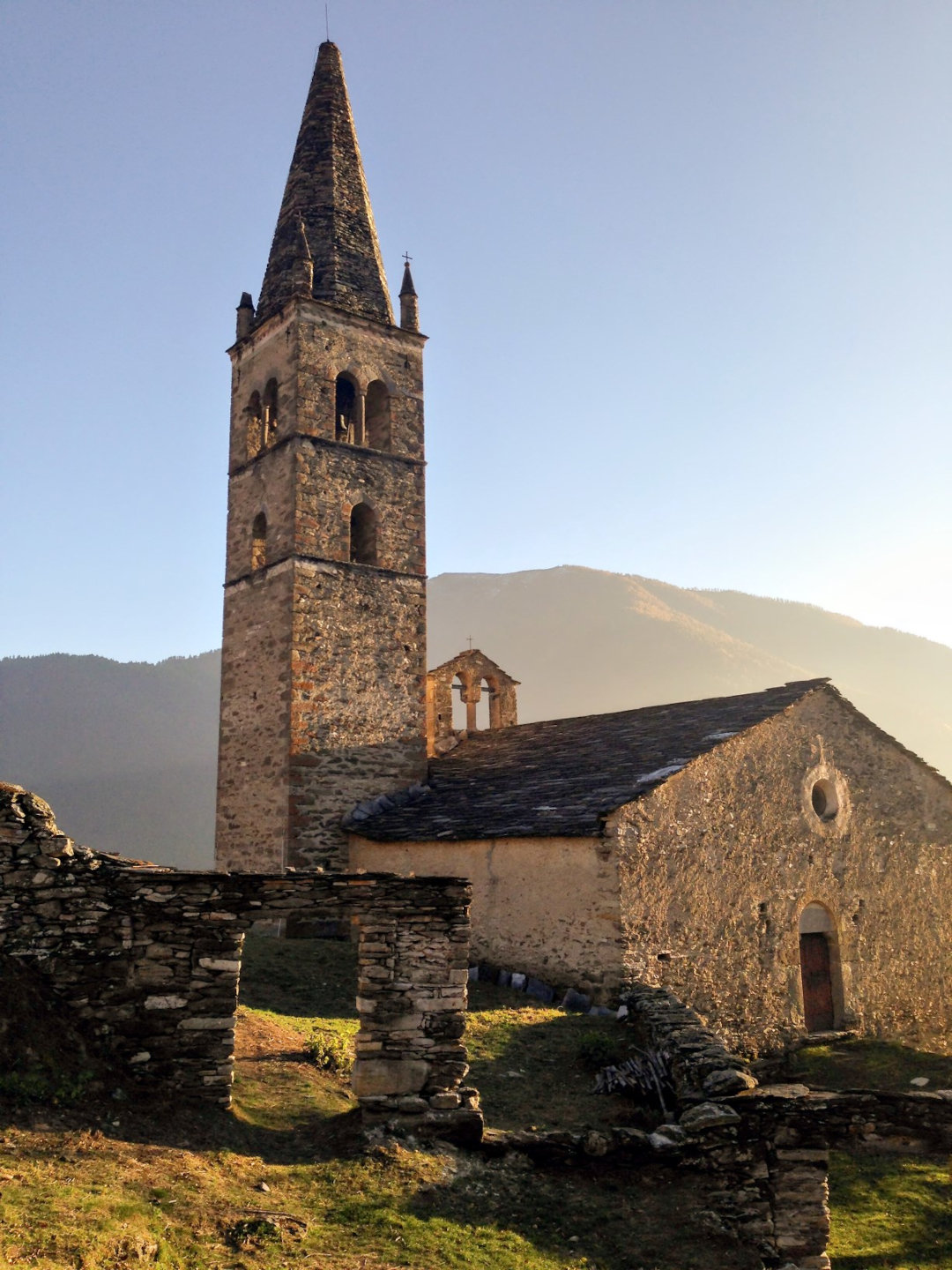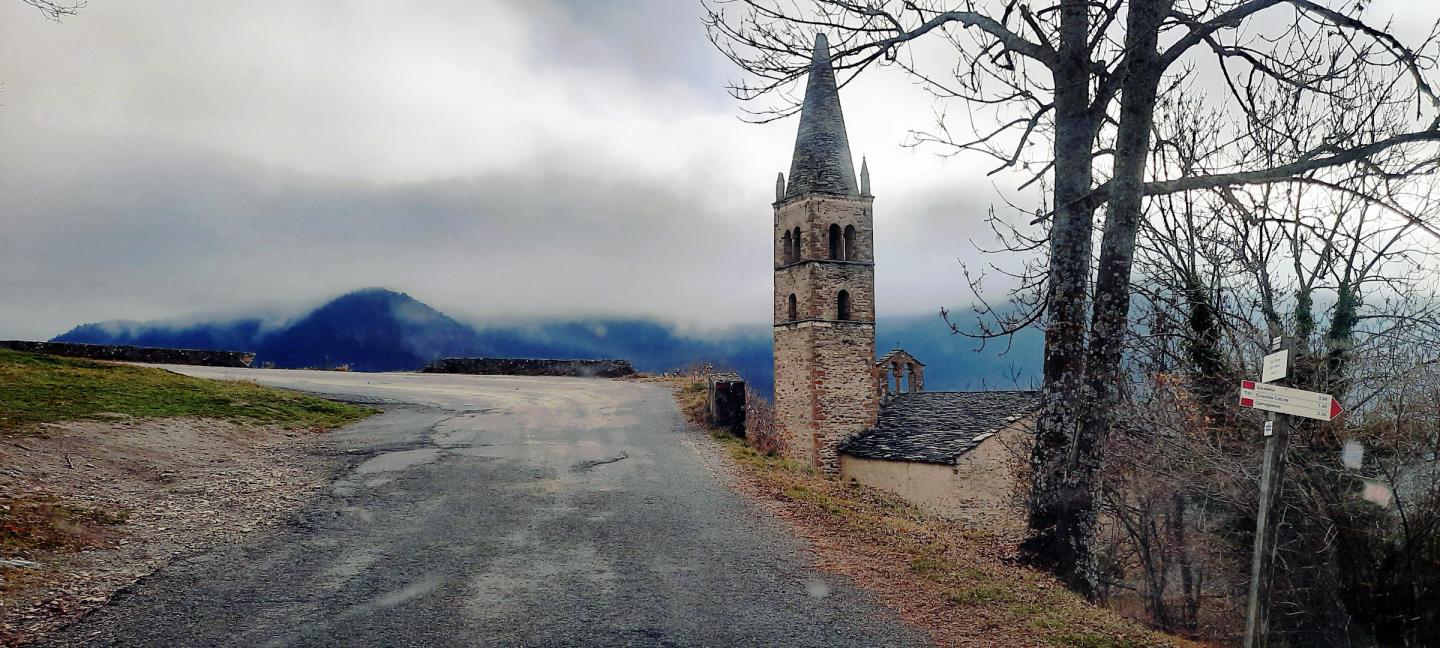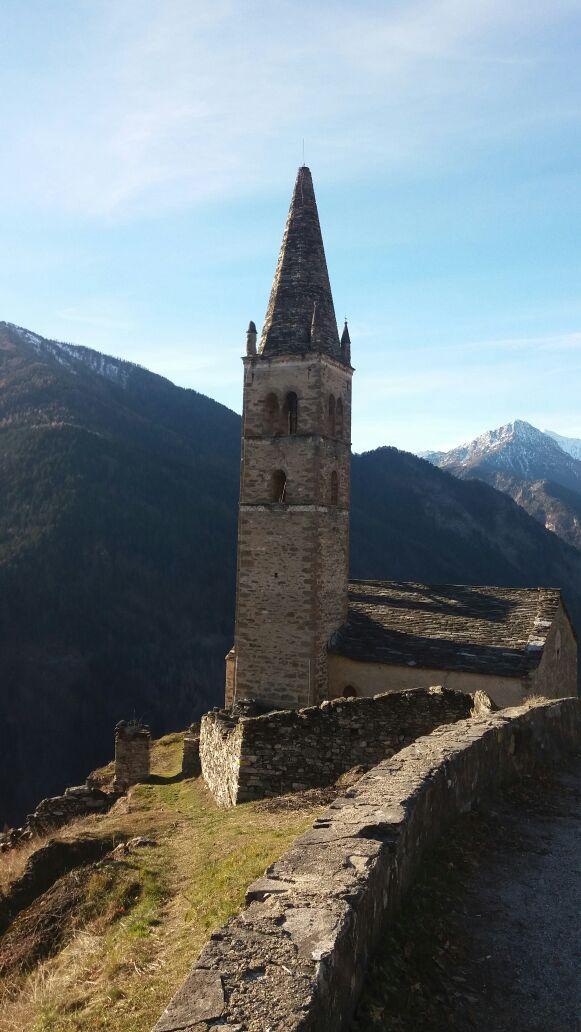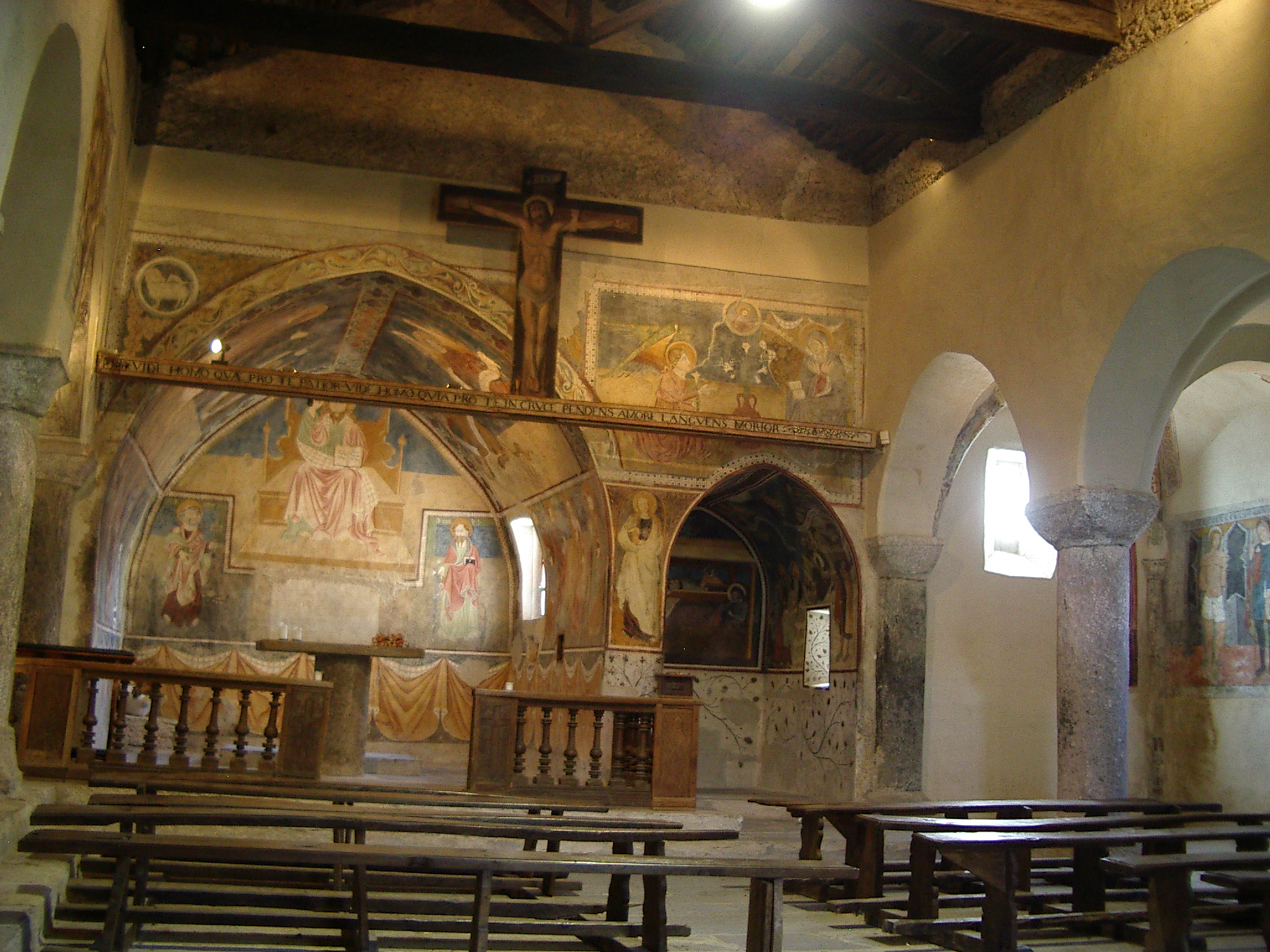San Peyre’s Church
2 km downstream of Cucchiales you’ll come across San Peyre's church, a most exquisite example of art and history perched atop a spur of rocks and regarded as a national monument.
Historical documents attest to thousand-year-old Christian settlements in our area, and this claim is also supported by the structure of the church: the central apse we see today was the early chapel to which the central and side aisles were added a few centuries later.
How can we explain the choice to build a church in such an isolated location? The main reason was the equal distance from all the hamlets and the absence of bushes or trees in the area that ensured it was clearly visible by the people living in nearby hamlet of Stroppo and in the surrounding municipalities. Oral history tells us that it was one of the first churches in the Valley and worshippers from the neighboring villages of Marmora, Elva, Canosio, Celle and Albaretto gathered on nearby hills to take part in the mass from afar, listening in to the church bells of the belfry that marked the key parts. Another bell tower was built next to it, and it reached twenty meters of height in order to avoid having the bells stolen, as it sometimes happened. A few centuries later, a church was built further down but St. Peyre was still used, together with the new one, for funerals and mass twice a month.
In its cemetery next to the church, the dead of Cucchiales and Morinesio were buried; and also those of Caudano who had included the request in their will. This cemetery was used until Napoleon, with the Saint Cloud edict of 1804, forbade the burials in busy places. Since then, the cemetery has been abandoned and the surrounding walls next to the chapel are the only ones left. Furthermore, because of the parish priests complaining about the distance and the discomfort in reaching the place, even the functions were cancelled, and the decision caused an uprising among the inhabitants of the upper hamlets, so much so that 50 grenadiers of the Pinerolo brigade had to be sent to pacify them. The punishment for the protesters was to provide soldiers with food and cartridges.
Today the church opens only to celebrate the Mass on the occasion of the feast of St. Peter and for visitors who want to visit this artistic and impressive testimony of the past. On the portal you can find the date '1298', likely the year when the construction of the side aisles was completed. Upon entering, you will notice several frescoes that date back to between the fourteenth and sixteenth centuries.
In the central apse you can see a fresco of a blessing Christ holding a book. Nearby there is one of St. Peter, one of the five depicting the saint here (the church is dedicated to him).
The Apostles surround him and Judas is represented by the tree on which he would have hanged himself, or the 'lignum vitae', the first symbol of the Eucharist in Christian symbolism.
Another interesting detail is the apse on the right representing a Christmas scene; it was nothing more than a simple and intelligent technical device to avoid the collapse of the dismal side wall of the central apse. Thus the church can boast an original detail, symptom of its peculiarity.
The frescoes in this apse have a sweet and peculiar touch that conveys an intimate warmth that is well suited to the mystery of the Nativity. A noteworthy detail is the shepherd with piva, a musical instrument that was used to reconstruct a real and functioning musical instrument that is typical of the Occitan tradition. There are several other elements that are connected to local life and history. Other frescoes are one of the Virgin Mary sitting enthroned with the Saints, St. Christopher and, in the right aisle, the Saints Sebastian, Rocco and Fabiano Papa.
During the terrible plague of 1630 some other frescoes were covered with a thick layer of lime as disinfectant and have now been recovered: a beautiful Annunciation, a fresco with Magdalene, one with Saint Christopher holding the child, and an Easter lamb.
Under the direction of doctors Ragusa and Matera the latest recoveries were made between 1988 and 1990, and soundings were carried out here and there on the side walls to ascertain whether there were other art treasures hidden behind the lime.
I have drawn a lot of information from the booklet by G. Lonardelli 'Church of S. Pietro di Stroppo - Origins - History and digressions’, that I quote here “[…] but St. Peter, in its solitude and abandonment, is certainly not alone; around it lie thousands of deceased who would have attended the church assiduously when alive, making it resound with their songs and prayers; and here they have found eternal peace.”
And lastly a quote by Adriana Abello on ‘Stroppo told by the Stroppesi’: “Nobody remembers them anymore, there is not even a cross; but they certainly would deserve that and a thank you for the beautiful work of art that they left us and that we can still admire today.”






